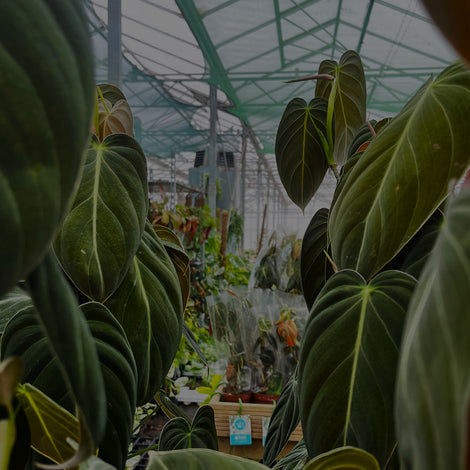Beginner's guide to Climbing plants
Climbing plants bring a unique vertical dimension to any garden, transforming ordinary walls, fences, trellises, and arbors into living masterpieces. Available in various forms, such as vines, ramblers, and scramblers, these plants can be grown for their flowers, foliage, or fruit. In this comprehensive guide, we'll delve deeper into the fascinating world of climbing plants, discussing their benefits, types, planting and training techniques, care, and maintenance.
- What are Climbing Plants?
Climbing plants are a diverse group of plants that grow upwards using various mechanisms, such as twining stems, tendrils, aerial roots, or adhesive pads. This category includes annuals, perennials, and some shrubs, all of which are adapted to maximize their vertical growth. Climbing plants provide gardens with depth, height, and visual interest, enhancing landscapes that may otherwise lack variation.
- Benefits of Climbing Plants
a. Space-saving: Climbing plants grow vertically, making them an ideal choice for small gardens or tight spaces where horizontal space is limited.
b. Visual Impact: The unique growth habit and stunning displays of flowers, foliage, or fruit create eye-catching focal points in any garden.
c. Privacy and Screening: Climbing plants can be used to cover walls, fences, or unsightly structures, creating a natural privacy screen or camouflaging less attractive features.
d. Shade and Cooling: When grown on pergolas or arbors, climbing plants can provide shade and reduce temperatures in the surrounding area.
e. Wildlife Habitat: Many climbing plants produce nectar-rich flowers or fruit, attracting pollinators and other wildlife to your garden, promoting a healthy ecosystem.
- Popular Types of Climbing Plants
a. Clematis (Clematis spp.): Clematis boasts large, showy flowers in a variety of colors and shapes, making it a popular climber for sunny or partially shaded areas. There are numerous species and cultivars available, each with unique bloom times and pruning requirements.
b. Wisteria (Wisteria spp.): Known for their vigorous growth and long, cascading racemes of fragrant, pea-like flowers, wisteria is available in shades of purple, blue, pink, or white. They require a strong support structure and regular pruning to maintain their shape and prevent them from becoming invasive.
c. Honeysuckle (Lonicera spp.): Honeysuckle is valued for its sweetly scented tubular flowers, which attract pollinators and can be grown in sun or partial shade. Some species are evergreen, while others are deciduous, providing seasonal interest in the garden.
d. Climbing Roses (Rosa spp.): Climbing roses come in a wide range of colors and fragrances, adding a romantic touch to your garden. They require support and regular pruning to maintain their shape and encourage blooms.
e. Passionflower (Passiflora spp.): These exotic climbers produce intricate, show-stopping flowers and can grow in various climates. Some species also produce edible fruit, such as the passion fruit (Passiflora ligularis).
f. Ivy (Hedera spp.): Ivies are evergreen climbers with attractive foliage, suitable for shady locations. Some species can become invasive, so it's important to choose non-invasive varieties and keep them under control with regular pruning.
- Planting and Training Techniques
a. Site Selection: Choose a suitable location for your climbing plant based on its specific sun, soil, and moisture requirements. Ensure the area has enough space for the plant to grow and spread.
b. Support Structures: Provide sturdy support structures, such astrellises, arbors, pergolas, or fences, for your climbing plants to grow on. Make sure the support is strong enough to withstand the weight of the mature plant.
c. Planting: Dig a hole that's slightly larger and deeper than the root ball of the plant. Add a layer of well-rotted compost or manure to the bottom of the hole and mix it with the native soil. Place the plant in the hole, ensuring the top of the root ball is level with the surrounding soil. Backfill with soil and water thoroughly.
d. Training: Train your climbing plant by guiding its growth towards the support structure. For twining climbers, wrap the plant gently around the support. For those with tendrils or aerial roots, provide smaller support structures (such as strings or mesh) for the plant to grip onto as it grows.
- Care and Maintenance
a. Watering: Keep the soil consistently moist but not waterlogged. Adjust your watering schedule based on the specific needs of each plant species and local weather conditions.
b. Fertilizing: Apply a slow-release granular fertilizer at planting time, or use a balanced liquid fertilizer every 4-6 weeks throughout the growing season. Avoid over-fertilizing, as this can lead to weak, leggy growth and fewer blooms.
c. Pruning: Regular pruning is essential for maintaining the shape and health of climbing plants. Remove dead or damaged growth and trim back any excessively long or wayward stems. Follow the specific pruning guidelines for each species to encourage optimal growth and flowering.
d. Pest and Disease Control: Monitor your plants for signs of pests and diseases, such as aphids, spider mites, or powdery mildew. Apply appropriate treatments when necessary, following label instructions and using organic methods when possible.
e. Winter Protection: Some climbing plants, particularly those grown in colder climates, may require winter protection. This can involve insulating the root zone with mulch or wrapping the plant with burlap or frost cloth.
Climbing plants offer a unique opportunity to elevate your garden's design by adding vertical interest, color, and texture. With a diverse range of species to choose from, and generally low-maintenance requirements, these plants are perfect for gardeners of all skill levels. By following the detailed tips and advice provided in this guide, you'll be well on your way to designing a garden filled with beautiful, thriving climbing plants.





















Leave a comment
Please note, comments need to be approved before they are published.